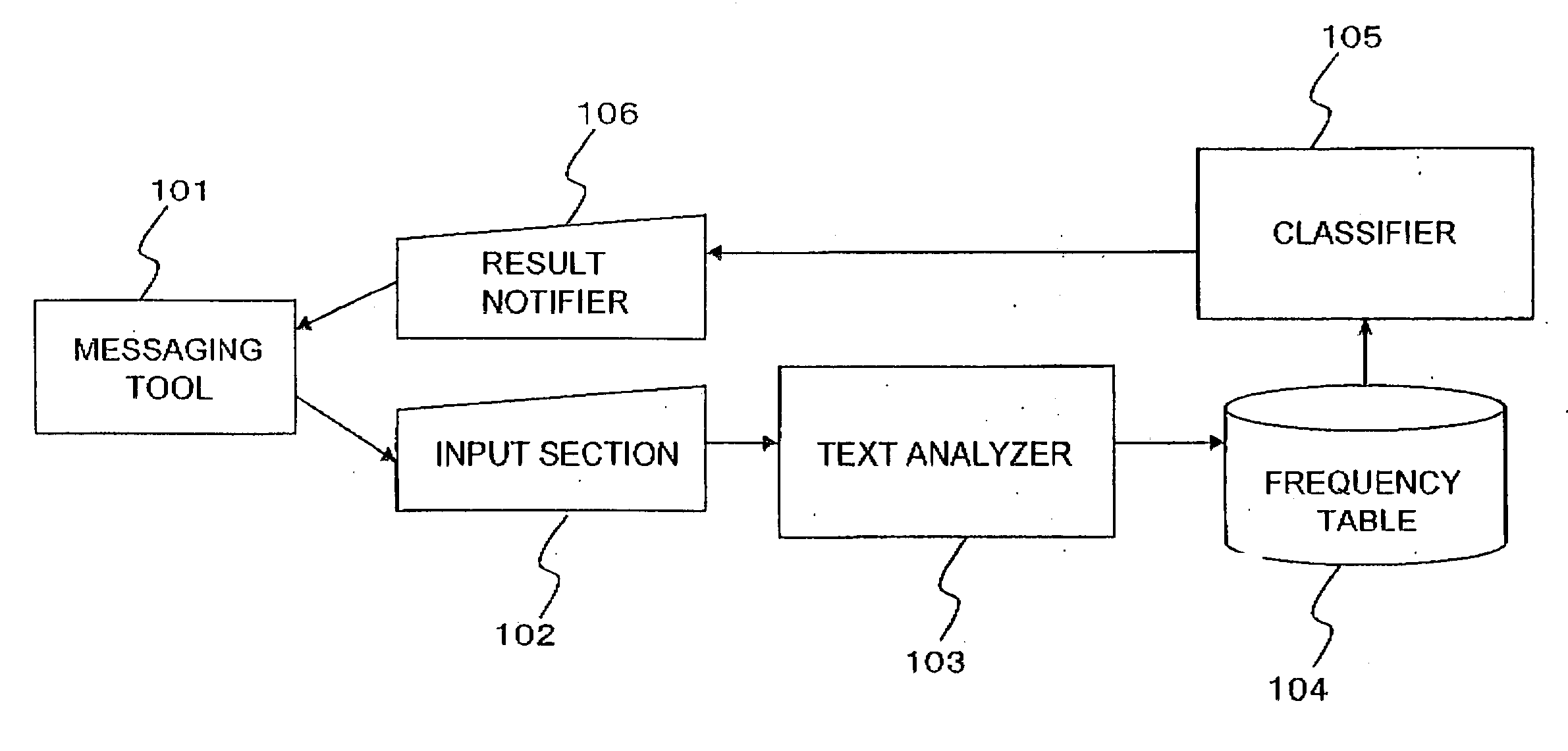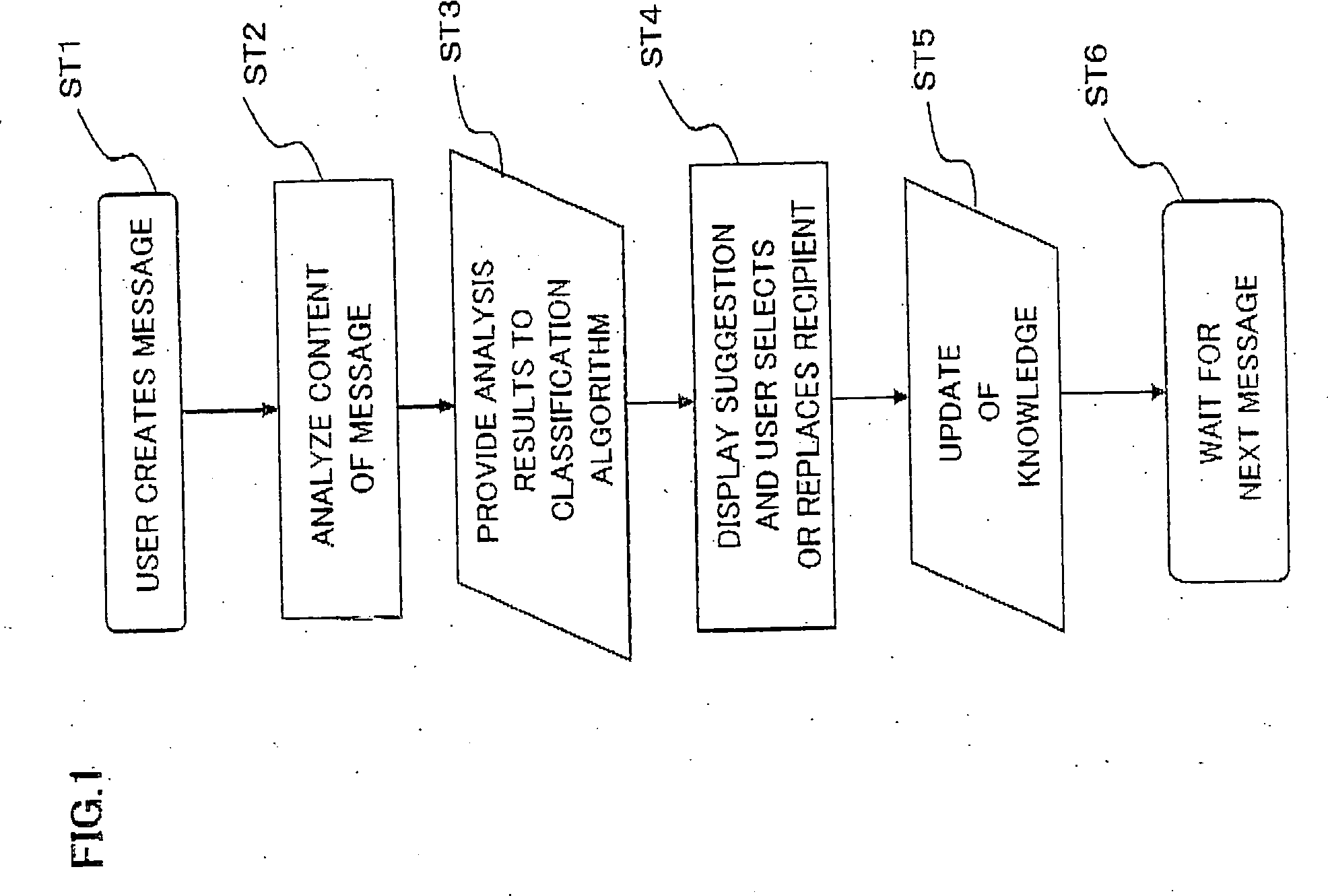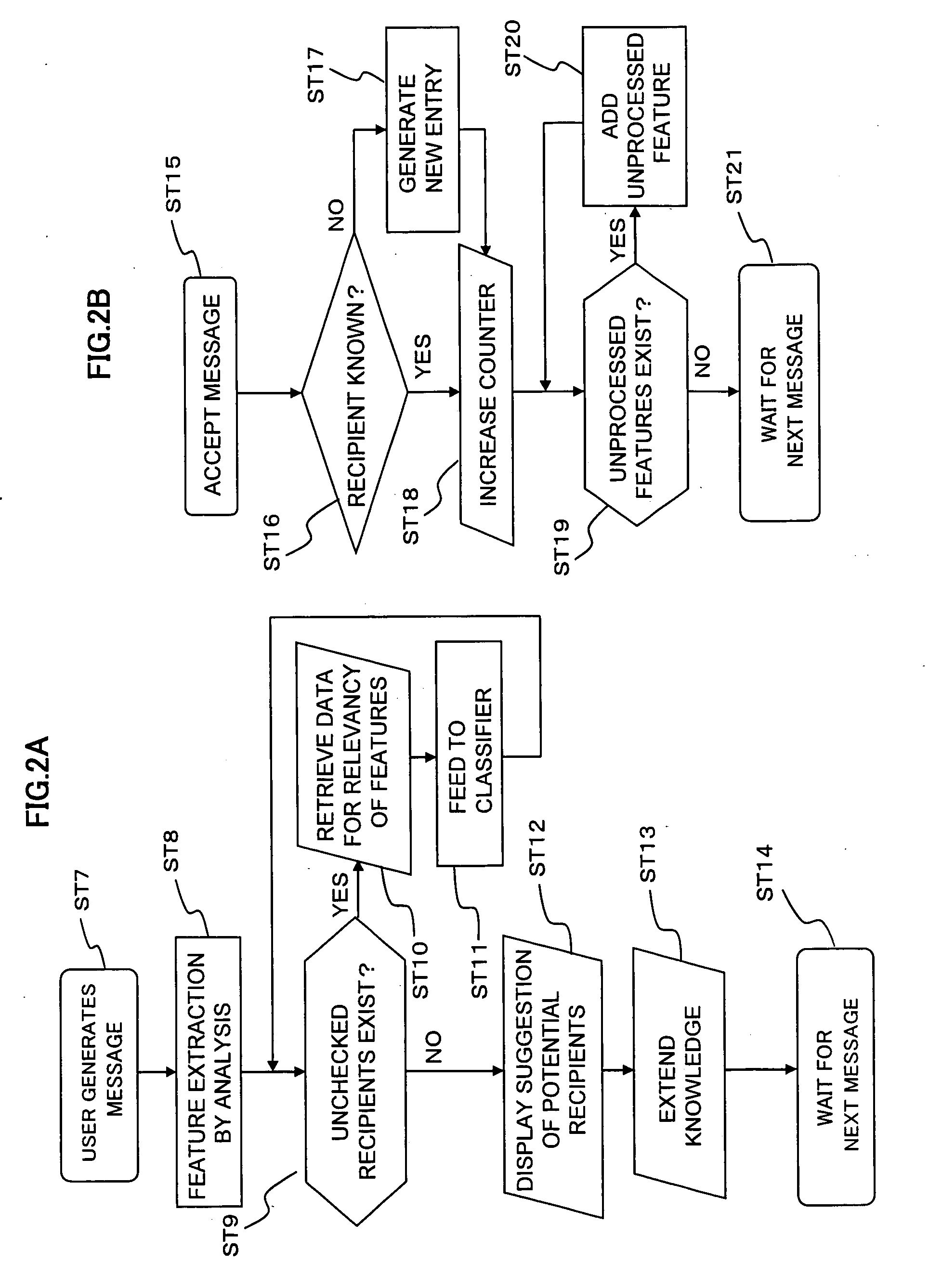Method and apparatus for identifying potential recipients
a technology for identifying potential recipients and messages, applied in the field of identifying potential recipients of messages, can solve the problems of time-consuming and laborious searching for the correct recipient identifier, and the automatic completion becomes practically useless, and achieves the effects of user-friendliness and error detection, and convenient us
- Summary
- Abstract
- Description
- Claims
- Application Information
AI Technical Summary
Benefits of technology
Problems solved by technology
Method used
Image
Examples
Embodiment Construction
[0045]FIG. 1 shows a flow chart of an implementation of the method according to the invention. The individual processes are in general independent from the applied algorithm for performing the extraction and / or classification of features. First of all, the user creates a message in step 1. The content of the message is analyzed in step 2 and subsequently in step 3, the results of the analysis are fed to a classification algorithm. Finally, in step 4 a suggestion to the user is generated who selects one of the suggested recipients or replaces a recipient not contained in the suggestions. A correlation of the analyzed message and the user, which is performed in such a way, is used to update the knowledge required for classification. For this end, in step 5 an update of knowledge is started. A connection between the extracted features and the selected recipient is established and combined with the gathered information about the corresponding recipient. After that, further messages are ...
PUM
 Login to View More
Login to View More Abstract
Description
Claims
Application Information
 Login to View More
Login to View More - R&D
- Intellectual Property
- Life Sciences
- Materials
- Tech Scout
- Unparalleled Data Quality
- Higher Quality Content
- 60% Fewer Hallucinations
Browse by: Latest US Patents, China's latest patents, Technical Efficacy Thesaurus, Application Domain, Technology Topic, Popular Technical Reports.
© 2025 PatSnap. All rights reserved.Legal|Privacy policy|Modern Slavery Act Transparency Statement|Sitemap|About US| Contact US: help@patsnap.com



